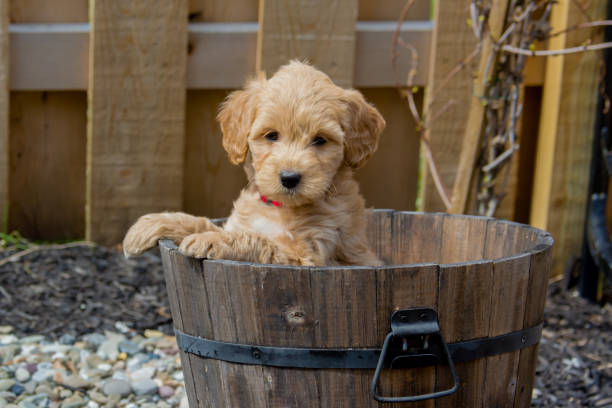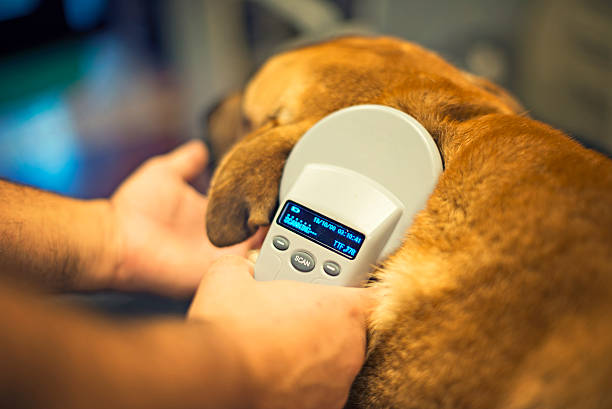Choosing to adopt a blind dog demands careful thought on various aspects. This article discusses issues such as the dog’s health and problems associated with housebreaking, among others. It’s essential to recall that every dog is distinct, and so the information provided here may not always be applicable to your particular pet.
But first, let’s start with the basics: What does it mean to be blind? When we say a dog is blind, it means that he cannot see the light. The term ‘blind’ typically refers to a loss of vision that is non-progressive, meaning the dog will be blind for life.
If your new pup has only lost his vision in one eye, it is typically called monocular. If he has lost sight in both eyes, it is called bilateral. It’s important to note that this vision loss does not include dogs with tunnel vision or affected central vision.
A blind dog has the same chance of getting hit by a car as any other dog, so always use caution when allowing them to roam freely in your neighbourhood. Even if your pup seems aware of his surroundings, it’s possible he could get too close to traffic without realizing it. And just because your dog can’t see that car speeding toward him doesn’t mean he won’t feel the impact.


House Training a Blind Dog: The Good and The Bad
When house training (or crate training) your new blind dog, you’ll need to consider his unique situation. It may be frustrating for both of you when accidents happen but don’t worry—with patience and persistence, it’s possible to housetrain your blind dog.
Remember that accidents are bound to happen when you first bring home a new pup, but this problem isn’t limited to blind dogs. It can be discouraging for you and your pup, but try not to get too down on house training. Just because your pup isn’t house trained yet doesn’t mean he won’t be.
As long as your blind pup has plenty of time outside to do his business, you should have no trouble housetraining him. Many dogs are already crate trained before their vision is lost, so it’s best to continue doing so if you’re using a crate for house training. If you’re not already using a crate, consider trying it out since it will provide your pup with his own space to avoid accidents at home.
House training is made more difficult by the fact that your blind dog won’t be able to see where he’s urinating or defecating. This can cause him to believe he is relieving himself outside when in reality, he’s just going in a pile on his living room floor. To avoid confusing your pup, try to keep him on a strict schedule and always take him out immediately after he wakes up from a nap, eats, or drinks water.


House Training the Blind Dog: Adding Another Dog to The House
If you already have another non-blind dog at home, you should have no trouble housetraining your new blind pup. While house training your blind pup can be difficult while he’s learning his physical limitations, it will be much easier for both of you if you add another dog to the mix.
The other dog in your household could teach your blind pup all he needs to know about going to the bathroom in a particular spot. He might even clue your blind pup in on the fact that he needs to go outside versus doing his business inside.
Housetraining a Blind Dog is Possible With Patience and Persistence
House training a blind dog can be difficult, but it’s not impossible. Just keep your new pup on a strict schedule, take him out immediately after he eats or drinks water, and ignore his accidents if you happen to miss them.
Now that you have some background information about what to expect when bringing home a blind dog let’s get into the basics of bringing your new pup home.


On The First Day Home With Your New Blind Dog
You’ve gotten through the long adoption process and finally brought your blind dog home. He’s out of the shelter, in your arms, safe at last!
If you’re ready to start housebreaking or crate training your new blind dog, it’s best to get right into it. Just keep in mind that accidents are bound to happen. Please don’t get discouraged; you can housetrain your blind dog, but it may take some time with patience and persistence.
Here are some things to keep in mind on your first day home:
Make sure your new blind pup has eaten and drank water before leaving the shelter. If he needs a few minutes to stretch his legs after the long car ride, let him do so before leaving the shelter.
Blind dogs become accustomed to noises easily, so if you live in an apartment or other noisy location, then your pup may need some time to get used to his new environment. If your blind dog is already adjusted to the noise level at home, he should be fine, even if you come home with another dog.
Introduce your blind pup to his new house slowly by taking him through each room individually. Before entering a new space, let your pup sniff around the doorway so he can determine if it’s safe to enter. If he gets scared, reassure him that everything is fine and nothing dangerous in the room.


Housetraining a Blind Dog is Easier with More than One Dog
If you already have another dog at home, it’s easier to housetrain your new blind pup if he brings along his furry friend for company. Your new blind pup might get confused when he needs to go out and eliminate, but having another dog around may clue him in that he’s supposed to go outside.
If you don’t have another dog at home but want to bring a second pup into the house, then you should wait until your blind pup has been fully housetrained. You can then get a new canine buddy for your blind pup and help them learn from each other.
Introduce Your Blind Dog to Different Surfaces
When you first bring your new blind dog home, you’ll want to introduce him to all the different surfaces he’ll need to navigate around. Some of these include carpets, hardwood floors, and tiled floors.
You’re going to have an easier time if your pup can tell what’s under his paws, so let him explore all the various surfaces around your home. If you only have carpet in some rooms and hardwood floors in others, then you should take your blind pup out to each room individually until he has gotten used to them all.
When it comes right down to it, your new blind dog will be just fine. He may get scared or confused when he can’t see, but with time and patience, you’ll be able to help him get the hang of things around your home. Even though he can’t see, your new blind pup will soon learn where everything is located in your home.
The more love you give your newly adopted blind dog, the better he’ll get used to his new home.
\


Do Your Research on the Different Kinds of Blind Dogs Before Bringing One Home
Not all blind dogs act or react the same way; some breeds make better companions than others. For example, if you’re looking for a dog that will be gentle with your children, then you might want to get an Irish Wolfhound. Irish Wolfhounds are known for being peaceful and calm, even around children.
If you’re looking for a more energetic dog, some breeds to consider would be German Shepherds or Golden Retrievers. These dogs love romping around outside with the kids and making new friends.
Be sure to find out what kind of dog you’re bringing home before adopting. You’ll want to know if he’s the kind that likes to cuddle or if he prefers his own space. Finding out these things in advance can make your transition much easier for everyone involved.
Conclusion
This article should help you answer most questions about what you should expect when bringing a blind dog home. It’s not always easy for everyone involved, but with the right amount of love and patience, you can help your new pup adjust to life in his new home.


